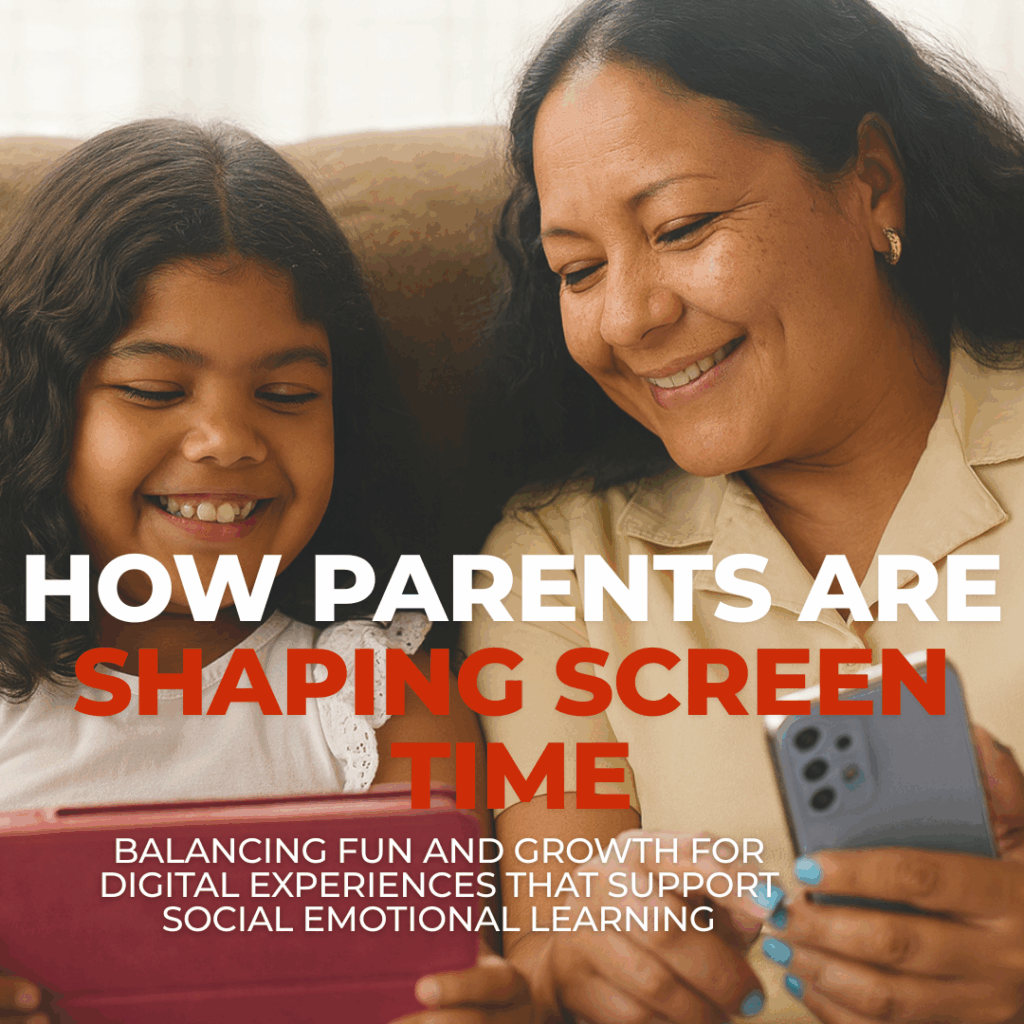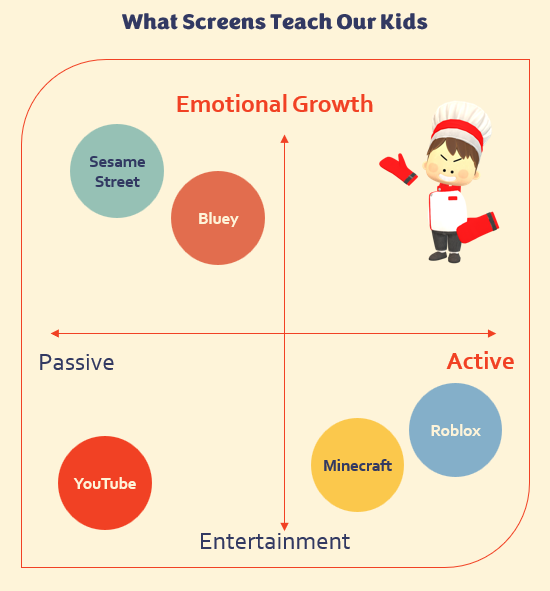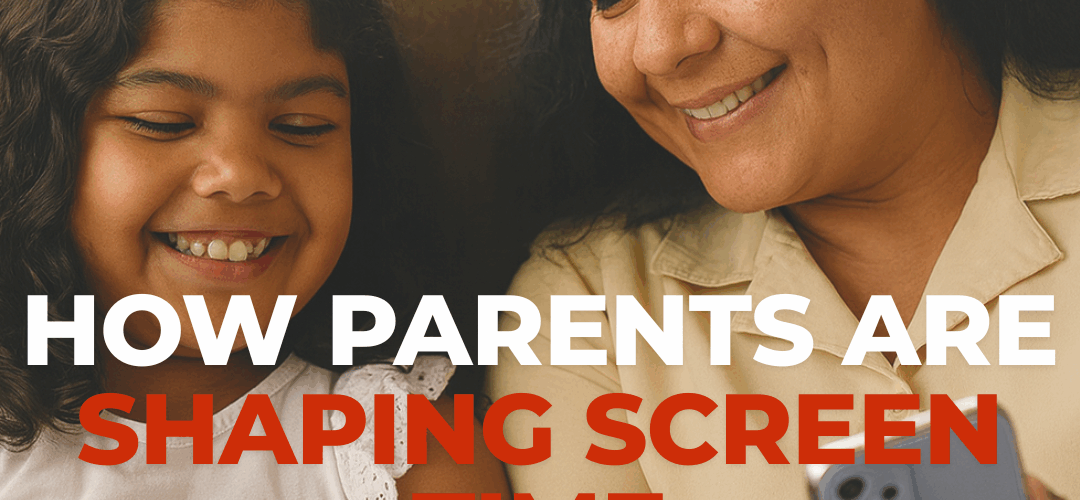
When we talk about VR and social emotional learning (SEL), the focus is usually on classrooms. But the real story is happening at home with parents shaping screen time.
In our last article, we explored how SEL and VR are reshaping the future of education— and why learning life skills will define the next chapter of how kids grow.
In this article, we’re shifting the focus to families. Parents shaping screen time are the ones balancing fun with growth, pushing back against endless distraction, and searching for digital experiences that actually support SEL and help kids build life skills that last.
Parents on the Frontline
Too often, social emotional learning is framed as a school initiative. But in practice, families are the first movers. They set the tone for how kids play, learn, and connect online. For today’s children, the internet isn’t a place they visit, it’s where they grow up. Screens have become their playgrounds.
For parents, that reality creates a daily tug-of-war between quality learning and digital noise. And the truth is simple: when it comes to shaping how children use technology, parents, not institutions, are leading the way.
Why Parents Shaping Screen Time Matters
Not all screen time is created equal. Parents shaping screen time see the differences every day:
- Passive emotional content: Shows like Bluey or Sesame Street model empathy and kindness— but kids remain observers, not actively learning life skills.
- Active entertainment: Games like Minecraft or Roblox spark creativity, but the lessons often stop at fun instead of learning life skills like resilience or teamwork.
- Pure distraction: Platforms like YouTube or TikTok keep kids hooked with autoplay, yet rarely build lasting skills.
What’s missing is a way to combine the emotional depth of stories with the active engagement of play. Parents aren’t against screens— they want them to matter.
What Parents Shaping Screen Time Told Us
In recent interviews with parents, three themes came up again and again:
1. Transitions are the hardest part.
The problem isn’t always screen time, it’s what happens when it ends. Parents shaping screen time described meltdowns and emotional crashes when games had no natural stopping points.
Visual timers helped, but not enough. As one parent told us: “The main challenge isn’t the screen time itself, it’s the emotional regulation when it ends.”
2. Not all play feels meaningful.
Parents shaping screen time are tired of “digital babysitting.” They want intentional, episodic experiences that spark real conversations.
Autoplay and endless scroll pull kids in, but leave little behind. What they want instead are intentional, episodic experiences that spark real conversations and support kids in learning life skills they can use beyond the screen.
One parent explained: “Bluey works because it’s fun for kids and parents, but also gives you talking points for real life.”
3. Parents want to be part of it.
Families want more visibility into what kids are doing, especially in VR, where the headset hides everything. One child physiologist described it bluntly: “Kids learning social interaction online is like Lord of the Flies.”
Parents aren’t looking to hover. They want shared play they can understand, guide, and enjoy too.
Parents Shaping Screen Time Are the First Movers
Why are parents leading here? Because they can’t wait.
- In schools, progress is slow. Policies, budgets, and staff burnout mean adoption of new tools takes years.
- At home, change happens fast. Parents are testing apps, downloading platforms, and setting boundaries right now.
- And habits start early. Resilience, sharing, and empathy are practiced first in family spaces, not classrooms.
That’s why parents keep asking for the same thing: tools that feel both meaningful and fun. Not just emotional lessons or pure entertainment, but something that blends the two.
Why Engagement Matters
Screens aren’t neutral. Every app, show, or game is competing for kids’ attention, and attention is powerful. It shapes what children care about, how they learn, and what habits stick. Parents shaping screen time want that attention to mean more— to create opportunities for learning life skills in ways kids actually enjoy.
Parents see this every day:
- TV shows engage kids with story and emotion (Bluey, Sesame Street): positive, but passive.
- Games engage kids through interaction (Minecraft, Roblox): active, but SEL often takes a back seat.
- Platforms engage kids through infinite scroll (YouTube, TikTok): grabbing attention without building skills.
This is the real tug-of-war families face. It’s not just about how much time kids spend on screens, it’s about what kind of engagement that time creates.
That’s why the next step isn’t to reject screens, but to design better ones. I’m talking about tools that combine the best of both worlds: emotional growth and active play.
A Rare Top-Right Corner
If you map today’s options, you’ll see what stands out when you look through an SEL lens:
- TV shows (Bluey, Sesame Street)
These succeed at modeling empathy, kindness, and problem-solving. Stories hook kids emotionally, and parents love them because they spark conversations at home. But they stop short of skill practice. That is, kids watch, laugh, and move on without ever doing the skills themselves. - Games (Minecraft, Roblox)
Games are powerful because they already use loops, interaction, and story— the same ingredients that make learning stick. They build creativity and persistence, but they weren’t designed with SEL in mind. Cooperation, resilience, and empathy show up sometimes, but they’re byproducts— not the point. - Platforms (YouTube, TikTok)
These are the clearest example of dead scrolling. They compete for attention with autoplay and endless novelty, but they rarely create meaningful growth. Kids are engaged, yes, but it’s passive engagement, without skills or reflection to show for it.
| Passive Consumption | Active Skill Development | |
|---|---|---|
| Emotional Growth | Bluey, Sesame Street | Muffin Fight |
| Pure Entertainment | YouTube | Minecraft, Roblox |
That’s why so few tools are deeply meaningful and highly engaging.
This is exactly the gap we’re designing Muffin Fight 2 to fill.

By weaving SEL directly into the story, loops, and interaction of play, kids don’t just watch or click, they practice. Families who’ve tried it have seen shy kids come alive, competitive kids practice teamwork, and whole households laugh their way into resilience.
Parents Shape What Comes Next
As SEL demand grows and VR becomes more accessible, parents shaping screen time are defining the path forward. They’re searching for tools that turn distraction into growth and make learning life skills a natural part of digital play.
The bigger question now is: what kinds of playful, connected spaces will we design for our kids?
In our next article, we’ll explore the design principles— story, loops, and interaction— that make VR & social emotional learning truly work.

